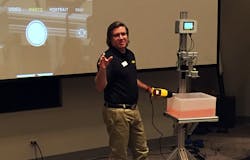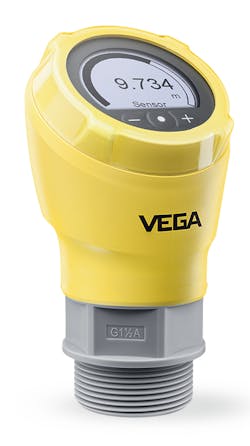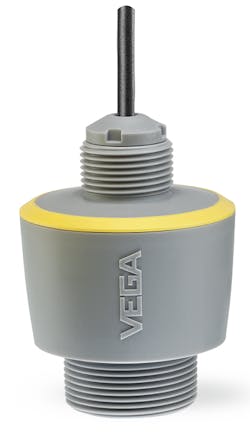Radar Overcomes Price Constraints for Water/Wastewater Industry
Vega is a sensor company that’s known for its radar technology, with about one in every three radar gauges around the world bearing the Vega name. But now Vega wants to make sure that people understand radar can also have all the benefits—and then some—of ultrasonic technology. That wasn’t always the case. A lot changed a few years ago when Vega began using 80 GHz technology, making its radar level measurement more accurate and more reliable because of the radar beam’s more precise focus.
But radar technology is also expensive. For this reason, Vega commonly plays in oil and gas, chemicals, and other industries that demand high-end capabilities. But not so much for water/wastewater, food and beverage, pharmaceuticals, OEMs, and other industries with low-end demands. In fact, just down the river from Vega’s headquarters in Schiltach—in the heart of Germany’s Black Forest—is a water treatment plant. You’d think the chances are good that they’d be using the sensors built by their neighboring company, but that hasn’t been the case.
As it tries to make its way into new industries with this lower-price line, Vega’s message is that radar is the better ultrasonic.
Ultrasonics and radar are very similar technologies. They are both non-contact technologies; they sit at the top of a tank to measure the distance down to the product surface. For that reason, they’re installed from above; there’s no need for a hole at the bottom of a tank and therefore no possibility of causing a leak. Neither technology has to be calibrated for a specific measurement; you just have to tell the sensor where your 100% and 0% points are. With the ability to use the same devices for a lot of different measurements, both sensor types simplify project planning as well.
- Temperature. Radar travels at the same rate no matter what the temperature is in the atmosphere. Ultrasonic technology can be affected by changes in temperature. In a demonstration, Tischler used a heat gun to raise the air temperature in the immediate vicinity of both a radar and ultrasonic sensor. While the radar measurement stayed at 72.3%, the ultrasonic measurement was bouncing all over the place.
- Gas stratification. The water/wastewater industry uses ultrasonics typically in chemical tanks. But the technology can be affected by gases that are stirred up in the tanks. In an example Tischler mentioned with an acetone tank, the ultrasonic sensor was consistent as long as the chemicals sat in the tank. But removing product from the tank stirred up gases, causing the sensor to indicate that the chemical level was rising when in fact it was dropping. In a demonstration with a fire extinguisher, Tischler showed how the ultrasonic failed but a radar sensor measured through the CO2.
- Pressure/vacuum. Ultrasonic technology is made up of mechanical waves that depend on molecules in the atmosphere. While radar can measure through any pressure level, Vega’s ultrasonic devices are limited to about 50 psi, according to Tischler.
- Environmental conditions. Buildup or crystallization on the instruments can also affect ultrasonics. “It might be things like spider webs, rain—anything that can affect actual transducement,” Tischler said. He mentioned a problem water treatment plants have with the ingress of rainwater into sewage systems. “They were getting problems with buildup, and ultrasonic wouldn’t work properly.” In his demonstration, he applied peanut butter to both the ultrasonic and radar sensors. The ultrasonic measurements got pretty stuck. Although the radar reading changed slightly, it continued to track the liquid level. This ability can be useful in overfill conditions as well, where—as in Tischler’s demonstration—the submerged radar sensor indicated an overfill of 107% while the ultrasonic sensor got stuck at 85%.
Both the sensors and the controllers can be operated via Bluetooth with a smartphone or tablet, making setup, display, and diagnostics easier, especially in harsh or hazardous environments.
About the Author
Aaron Hand
Editor-in-Chief, ProFood World

Leaders relevant to this article:



